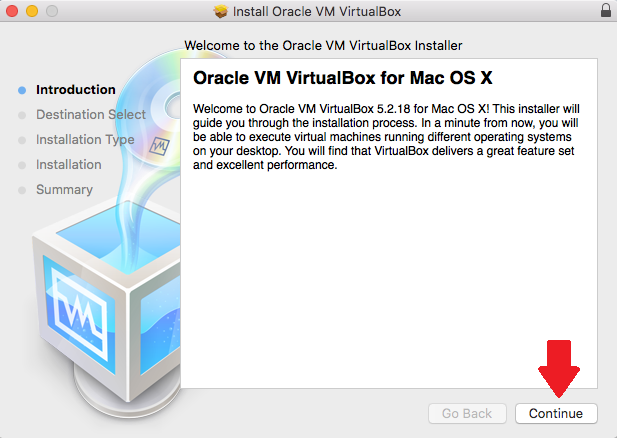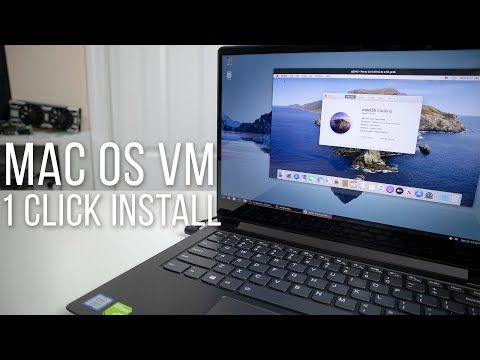

- Install linux on mac in vm how to#
- Install linux on mac in vm for mac#
- Install linux on mac in vm install#
- Install linux on mac in vm drivers#
- Install linux on mac in vm software#
Install linux on mac in vm install#
Congrats, you’re now running a full install of Ubuntu Desktop Linux on your Mac with VMware Fusion! I log in and it’s a full Ubuntu 16.0 Linux installation and system, ready to go online, run various included utilities and games, and much more:Īnd that’s it. You do remember the password you specified, yes?
Install linux on mac in vm for mac#
Looks great to me! I’m going to just let Fusion for Mac do all the work now by clicking “Finish” and sitting back to watch.Īfter a few seconds the install starts in earnest, including information windows from Ubuntu itself:Īfter a surprisingly small amount of time – it’s a fast install – you’ll be prompted to log in to your new Ubuntu Linux virtual machine. If you want to be able to access your main Mac desktop while within Ubuntu, check “Make your home folder accessible to the virtual machine” too. Turns out that VMware Fusion is smart enough to go through the entire Linux setup process without bothering you at all, so this is where you specify your basic account and password.

Smart, eh? To proceed, just click “Continue” on the lower right. Notice that the program has figured out what OS we’re installing and identified it’s a 64-bit version of Ubuntu Linux. Once it’s read the file image, VMware Fusion for Mac will automatically move to the next step: Simply drag the ISO file icon onto the drop target, as shown: The new virtual machine window will pop up, ready to go. The quickest way to install Kali is using a Virtualbox image which requires no installation.
Install linux on mac in vm how to#
sudo apt-get install qemu-system qemu-utils python3 python3-pip Downloading the macOS Base Image and Scripts To ea s ily get started, this guide will use the macOS-Simple-KVM open-source project on GitHub to ease the management of the virtual machine. Guide on how to install Kali Linux on VirtualBox in Mac OSX. In addition, you will install some Python tools. Since VirtualBox runs on Windows, Linux, and Mac, the process for setting up a virtual machine is pretty much the same in each operating system. It allows users to virtually install many operating systems on virtual drives, including Windows, BSD, Linux, Solaris, and more. Click on it and choose “New…” to create a new VM: You can install it using the command below. VirtualBox is an open source Virtual Machine program from Oracle. On the top left of the main screen there’ll be a “+” button. While it’s downloading, launch VMware Fusion. It’ll take a while for the download even on a fast connection. Easiest is to go to /download/desktop or just click on the box below (it’ll grab the latest copy if things have updated in the interim between me writing this and you downloading the OS): Grab an evaluation copy or go ahead and pay for a license at. To start, you’ll need VMware Fusion, of course. One huge benefit: You can run Ubuntu and whatever other VM you prefer simultaneous to also running MacOS X and all of your favorite Mac apps too.
Install linux on mac in vm software#
If you’ve just got some regular user software to test out, or just want to learn more about Linux with the easy Ubuntu world, then a VM is going to be a smarter alternative.
Install linux on mac in vm drivers#
If you’re testing software that accesses device drivers or hardware, for example, a dual boot is probably going to be better. Or, if you have the source to the Linux program, chances are you can recompile it on a Mac and run it natively.

The only comment I’ll make about dual boot versus virtual machine is that a dual boot install will be a bit cleaner and faster, if that makes a difference. Set up a virtual machine (I personally use VMWare Fusion) and then install whatever distro of Linux you desire on the virtual machine. Even better, you can grab a free ISO disk image of Ubuntu directly from their Web site and once you’ve grabbed the 1.5GB file, it’s rather astonishingly easy to go from download to running Ubuntu installation! Choose the Create a virtual hard disk now radio dial.Great choices all around, Ubuntu is my favorite Linux distro and VMware Fusion has been a cornerstone of my Mac experience for many years and does a great job installing and running just about every flavor of Linux (and Windows too). Choose Linux as the type of installation. Add a name for your virtual copy of Linux. Installing Linux through VirtualBox Click New in VirtualBox.


 0 kommentar(er)
0 kommentar(er)
